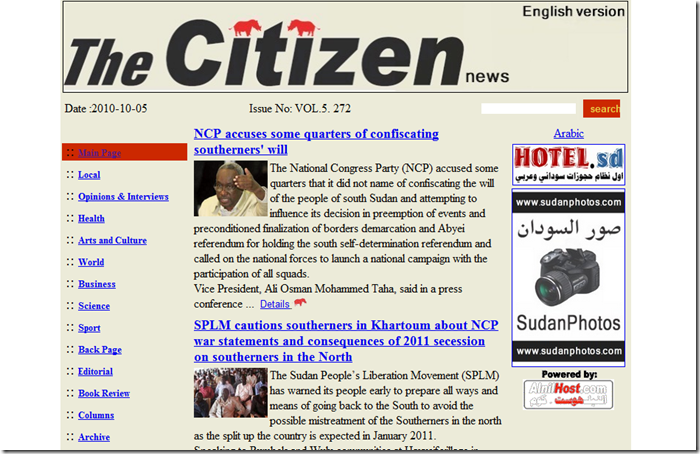
HT: Karuna Herrmann
Probably the best economics blog (founded) in South Sudan

More on the economics of newspapers:
Peter Kirwan at wired.co.uk has pieced together some numbers and estimates that the Guardian’s online ad revenues could be enough to entirely funding its reporting and editorial operations by 2015.
[£40m] is the number budgeted for overall digital revenues at GNM [Guardian News & Media] during the year to March 2011.
…
GNM expects to boost its digital revenues by around 30 percent in the space of a year.
…
I’ve used a range of more realistic growth rates to estimate how long it might take GNM’s digital operations to earn the £100m required to keep a decent-sized newsroom operating seven days a week.
At 10 percent annualised growth, the target date is 10 years away, in 2020.
At 15 percent, it’s seven years away, in 2017.
At 20 percent, it’s five years away, in 2015.
I need an iPad now.
newspapers typically spend about 15 percent of their revenue on what, to the Internet world, are their only valuable assets: the people who report, analyze, and edit the news. Varian cited a study by the industry analyst Harold Vogel showing that the figure might reach 35 percent if you included all administrative, promotional, and other “brand”-related expenses. But most of the money a typical newspaper spends is for the old-tech physical work of hauling paper around. Buying raw newsprint and using it costs more than the typical newspaper’s entire editorial staff.
I have reached my limit with the New York Times: I think it would be a better world if it shut tomorrow--all of the best and some of the good journalists would go elsewhere and do their work, and a lot of bulls--- would vanish from the public debate.
Shut down the New York Times today
Does the Tory party care about aid?
In a recent green paper on international development, the Conservative party sought to establish its commitment to aid.Aid is not the same thing as development. They cannot be used interchangeably. They are not synonyms.